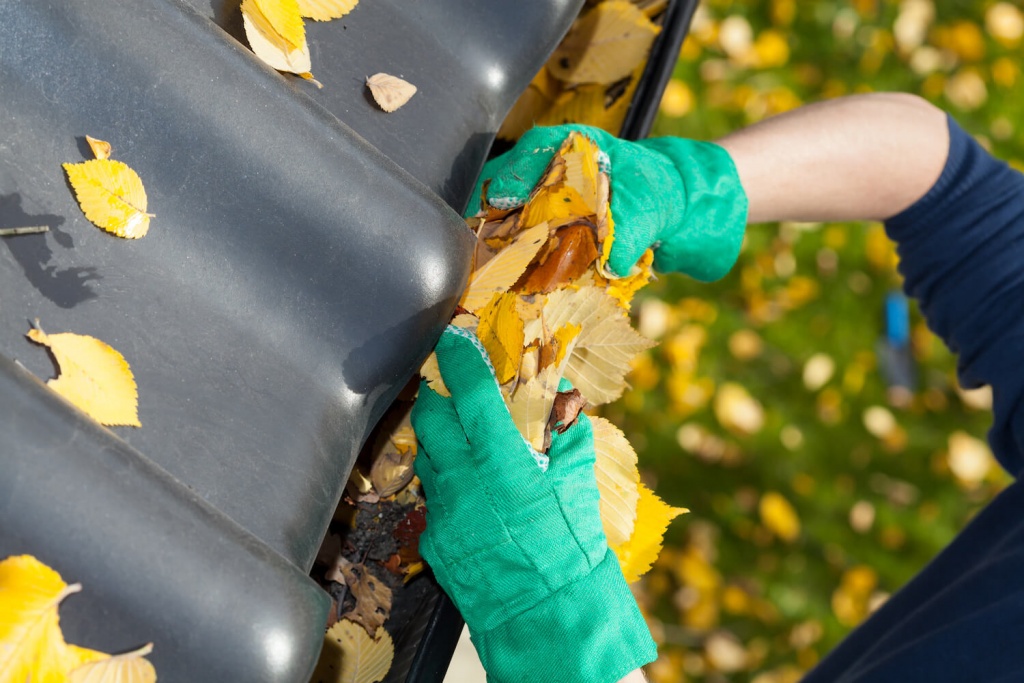You can lower the risk of fire damage to your roof and keep your home safe. But only if you follow specific advice and maintain your roofing and safety procedures. These include:
- Keep Your Roof Clear of Debris
- Inspect Your Chimney Often
- Trim Your Trees and Shrubs
- Install Fire-Resistant Roofing
- Keep Fire-Fighting Equipment
Most quality roofing can withstand a certain amount of fire. But not all. So you must pay attention to it to maximize the safety of everyone in your home and prevent the worst.
So if you’re wondering, “how do I protect my home roof from a fire?” Please read this handy article.

Keep Your Roof Clear of Debris
It helps to clean your roof and gutters often to get rid of the trash, leaves, and other things that could catch fire. If the roof and gutters are clean, it will be harder for a fire to spread to the roof. Flammable things can catch fire easily, so it’s important to get rid of them often to reduce the fire risk. Once a month is enough. Also, cleaning the gutters can keep water damage and other problems from happening, which can increase the risk of an electrical fire.
Inspect Your Chimney Often to Reduce Fire Risk
Make sure your chimney is in good shape and doesn’t have any holes or cracks. And have it cleaned often to get rid of any creosote buildup, which is very flammable. Taking care of your chimney is an important way to lower the chance that a fire will damage your roof. This is because a chimney that isn’t in good shape can cause fires because it will let sparks fly out and start fires in nearby things that can catch on fire, like dry debris and organic materials.
Trim Your Trees and Shrubs to Prevent Damage
Keep trees and bushes trimmed and away from your roof and chimney at all times. This will make it less likely for a fire to spread from nearby plants to your roof. Try the following to do this:
- Make sure no trees or bushes are near your chimney.
- Leave at least 2 meters of space between tree branches and your roof.
- Use Oak, Yucca, and Buckwheat, all of which have leaves that don’t catch fire.
By trimming trees and bushes and keeping them away from the roof and chimney, you can reduce the chance that a fire will spread and limit the damage it could do to your home.
Install Fire-Resistant Roofing
As an extra safety measure, you could install asphalt shingles or metal roofing that won’t catch fire. Shingles with a Class A fire rating are very fire resistant, and metal roofing is also a good choice because it doesn’t catch fire. Choosing roofing materials that don’t catch fire can reduce the chance of fire damage to your roof. These kinds of roofing materials can lessen the chance of fire damage. But keep in mind that they can’t get rid of it completely.
Keep Fire-Fighting Equipment at Home
A fire extinguisher should always be kept in a place where it is easy to get to in case of an emergency. In case of a fire, a fire extinguisher can help put out a small fire quickly before it gets bigger and does more damage. Still, you should keep the fire extinguisher in a place where it’s easy to get to, like near the kitchen or an exit. So, anyone who acts quickly and well can get it and use it to stop the worst from happening. But also learn how to use an extinguisher.
Summary
There are many considerations to make to lower the risk of fire damage to your roof. These include keeping dry debris away, trimming trees and shrubs, and using fire suppression tools.










